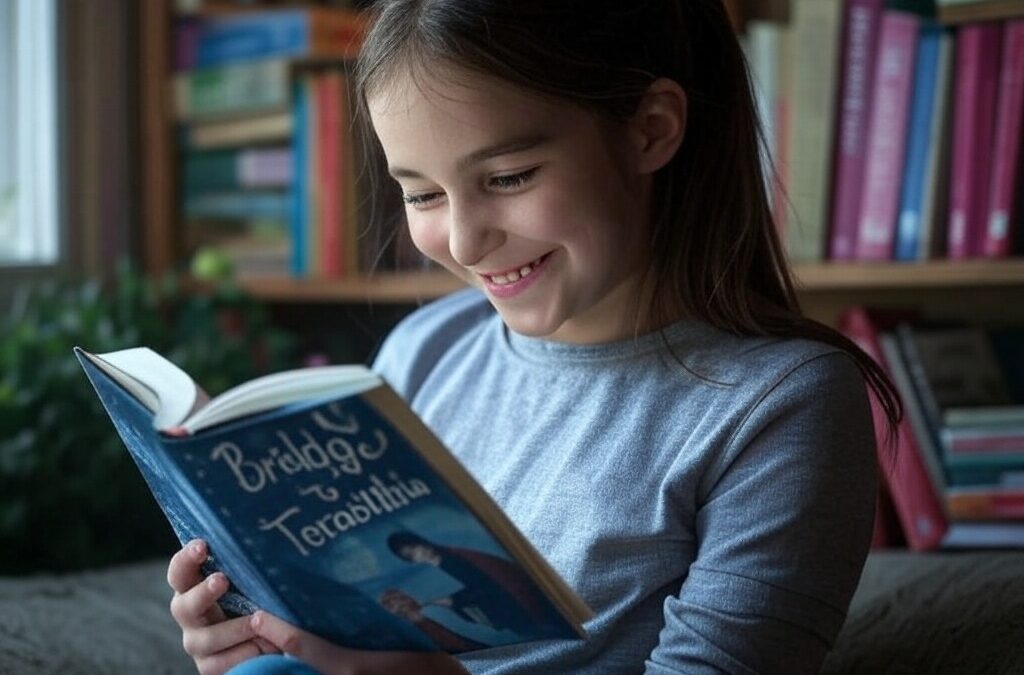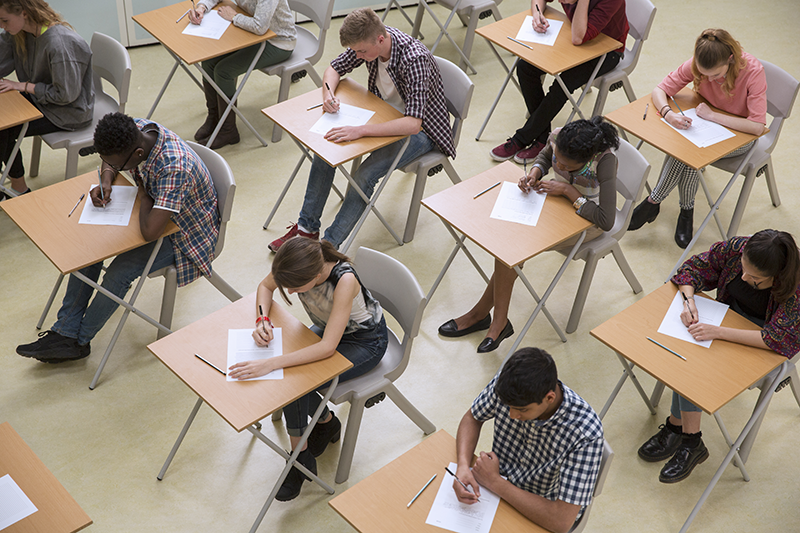
by TutorUp | May 13, 2024 | Education Topics, Parent and Tutor Resources
Reading is a foundational skill that shapes a student’s academic success and lifelong learning. Yet, many students across the United States struggle to reach the reading proficiency expected for their grade level. This gap not only hampers their performance in school but also affects their confidence and future opportunities. Addressing this issue requires understanding what reading levels mean, recognizing the scale of the problem through statistics, and implementing effective solutions like one-on-one tutoring to help students catch up.
What Do Reading Grade Levels Mean?
Reading grade levels indicate the expected reading ability of a student based on their school year. These levels are often measured using standardized assessments, such as the National Assessment of Educational Progress (NAEP), which categorizes proficiency into four tiers: Below Basic, Basic, Proficient, and Advanced. Here’s a breakdown of what these levels typically represent across key grade milestones:
- Grade 1 (Ages 6-7): Students should recognize letters, decode simple words, and read basic sentences with support. This aligns with a reading level of about 1.0–1.9 on many scales, focusing on phonics and sight words.
- Grade 4 (Ages 9-10): By this stage, students are expected to read fluently, comprehend short chapter books, and infer meaning from text. The NAEP “Proficient” level for fourth graders includes understanding main ideas and vocabulary in context, roughly equivalent to a 4.0–4.9 reading level.
- Grade 8 (Ages 13-14): Eighth graders should handle complex texts, such as novels or informational articles, analyzing themes and drawing conclusions. Proficiency here corresponds to a reading level of about 8.0–8.9, requiring strong comprehension and critical thinking.
Being “below grade level” means a student struggles with the skills expected for their age group. For example, a fourth grader reading at a second-grade level might still stumble over multisyllabic words or miss the main point of a story, putting them at a disadvantage across subjects.
The Scope of the Problem: Statistics on Reading Struggles
Recent data paints a sobering picture of how many students are falling behind in reading. According to the 2022 Nation’s Report Card from the NAEP, 66% of fourth graders in U.S. public and non-public schools scored below the Proficient level in reading, with 31% falling Below Basic. For eighth graders, the numbers are even starker: 69% were below Proficient, and 30% were Below Basic. These figures reflect a persistent challenge, worsened by disruptions like the COVID-19 pandemic, which saw kindergarten reading readiness drop from 55% to 37% between 2019 and 2020.
The National Center for Education Statistics (NCES) further reported in 2023 that nearly half (49%) of public school students started the 2022–23 school year behind grade level in at least one subject, with reading often cited as a primary area of concern. Pre-pandemic, this figure was lower at 36%, underscoring the lasting impact of learning loss. Additionally, over 54% of American adults read below a sixth-grade level, suggesting that early struggles can persist without intervention.
These statistics highlight a critical issue: millions of students are not equipped with the reading skills needed to succeed academically or engage fully in society. The consequences are profound—students who lag in reading by third grade are four times less likely to graduate high school on time, a risk that jumps to six times for those from low-income families.
A Proven Solution: One-on-One Tutoring
To bridge this gap, one-on-one tutoring stands out as a highly effective strategy. Unlike classroom instruction, which must cater to a group, personalized tutoring tailors lessons to a student’s specific needs, pace, and learning style. Research consistently supports its impact. A 2020 meta-analysis by the Annenberg Institute found that high-dosage tutoring—defined as at least 30 minutes, three times a week with a trained tutor—can boost learning by three to 15 months across grade levels. For reading specifically, Johns Hopkins University studies show one-to-one tutoring outperforms other interventions, like small groups or computer-based programs, especially for students far below grade level.
Why does it work? One-on-one tutoring allows tutors to pinpoint gaps—like weak phonics or poor comprehension—and address them directly. It also builds confidence through consistent, supportive feedback, which is crucial for students who feel discouraged. For instance, a struggling fourth grader might work with a tutor on decoding skills using engaging texts at their current level, gradually building up to grade-appropriate material. This individualized approach contrasts with the one-size-fits-all nature of many classrooms, where teachers juggle diverse needs.
Moreover, tutoring can integrate with school curricula, reinforcing classroom learning. Programs like Reading Partners demonstrate this success, showing significant gains in phonological skills and verbal ability through structured, one-on-one sessions. With only 11% of public school students currently receiving high-dosage tutoring (NCES, 2023), scaling up access could transform outcomes for the millions lagging behind.
Moving Forward
The reading crisis among students demands urgent action. With nearly two-thirds of fourth and eighth graders below proficiency, and half of students starting the year behind, the stakes are high. One-on-one tutoring offers a practical, evidence-based way to help students catch up, equipping them with the skills to thrive academically and beyond. Schools, districts, and communities must prioritize funding and implementing these programs, ensuring every child gets the chance to read at their potential. The investment isn’t just in literacy—it’s in their future.

by TutorUp | Apr 11, 2024 | Parents and Home
As a parent, you’ve likely seen how your child’s mood and energy can shift after a day spent running around versus one glued to the couch. It’s not just about burning off steam—physical activity has a direct tie to how well their brain works, especially when it comes to learning. Kids’ minds are wired to grow and adapt, and movement is like a key that unlocks their potential. On the flip side, too much inactivity can quietly chip away at that, leaving them less equipped to handle school’s demands.
Boosting brain power
When kids move—whether it’s playing tag, riding a bike, or even just walking to the park—their brains light up in ways that support learning. Research shows that regular physical activity boosts blood flow to the brain, delivering oxygen and nutrients that sharpen focus and memory. One study found that kids who get at least 60 minutes of moderate exercise a day—like a brisk game of soccer or a dance session—score higher on tests of attention and problem-solving than their less active peers. It’s not magic; it’s biology. Exercise triggers the release of proteins like BDNF, which help grow new brain cells and strengthen connections, especially in areas tied to reasoning and recall. So, when your child comes back from recess or gym class, they’re not just tired—they’re primed to take in what’s next on the lesson plan.
Less activity means lower scores
Inactivity, though, tells a different story. Sitting for hours—whether it’s scrolling on a tablet, watching TV, or even grinding through homework without a break—can dull those same brain processes. Studies link prolonged sedentary time to weaker cognitive performance, especially in younger kids whose brains are still developing. It’s not just about missing out on exercise; sitting too long can mess with blood sugar and slow circulation, leaving their minds foggy and less responsive. One report noted that kids who spend more than two hours a day on screens tend to have lower scores in language and thinking skills. That’s time that could’ve been spent moving, which doesn’t just wake up their body but keeps their brain from stalling out.
Emotional health is tied to physical activity
What’s really striking is how movement ties into their emotions, too. Physical activity cuts stress and anxiety—things that can clog up a child’s ability to focus or retain what they’re taught. A quick game of catch or a jog around the yard pumps out endorphins, leveling out their mood so they’re ready to sit down and tackle math or reading. Without that outlet, pent-up energy or frustration can fester, making it harder for them to settle into learning. You’ve probably noticed this yourself—a restless kid who can’t sit still isn’t exactly in the zone for a history lesson. Inactivity lets that restlessness build, while even a short burst of activity can reset them.
Incorporate fun activities
You don’t need to turn your child into an athlete to see the benefits. The key is weaving movement into their day in ways that fit your life. A family walk after dinner, a dance party in the living room, or letting them bike to a friend’s house can all add up. Aim for that 60-minute mark of activity—broken up if needed—and try to cap long stretches of sitting. If they’re stuck on homework, a five-minute stretch or jog around the house can jolt their brain back on track. The less they’re parked in one spot, the more their mind stays engaged. It’s not about pushing them hard; it’s about keeping them active enough to let their natural curiosity and smarts shine through.
Seeing your child struggle with focus or confidence in school is tough, and inactivity might be a sneaky part of that puzzle. Flip it around with some regular movement, and you’re not just helping their body—you’re giving their brain a real shot at keeping up and pushing forward. They’ll head into class sharper, steadier, and maybe even a little prouder of what they can do. That’s worth getting them off the couch for, right?

by TutorUp | Mar 18, 2024 | Parents and Home
As a parent, you’ve probably noticed how your child’s energy and focus can shift from day to day. Maybe they’re sharp and engaged one morning, then sluggish and distracted the next. What they’re eating could be playing a bigger role in that than you might think. Nutrition isn’t just about keeping them full—it directly impacts how well their brain functions, which in turn affects their learning. For school-age kids, whose minds are still developing, what’s on their plate can either fuel their success or quietly hold them back. Let’s unpack this a bit and talk about how you can set them up to thrive with some simple food choices.
How the brain is impacted
The brain is an energy-hungry organ, and it relies on a steady supply of nutrients to keep things like memory, attention, and problem-solving in gear. Research backs this up—studies show that kids with balanced diets perform better on tests and have stronger concentration than those who don’t. Take breakfast, for example. After a night of fasting, their brains need a recharge. Something like oatmeal with berries or scrambled eggs with whole-grain toast can give them slow-burning carbs and protein to sustain energy through those morning classes. Skip that—or worse, send them off with a sugary pastry—and their blood sugar spikes and crashes, leaving them foggy by mid-morning. It’s not just about filling their stomachs; it’s about giving their brains what they need to tackle math problems or follow a story in English.
What about snacks?
On the flip side, some foods can work against them. Processed snacks heavy in sugar or saturated fats—like chips, candy, or fast food—might taste good but can dull their mental edge. Studies link diets high in these to slower cognitive processing and even mood swings, which can make a tough school day feel even harder. It’s not that they can’t ever have a treat, but leaning too much on these can sap their focus over time. Instead, think about swapping in options that support their learning. Nuts or yogurt make great snacks—rich in healthy fats and protein to keep them steady without the sugar rollercoaster. Even something as simple as sliced apples with peanut butter can do the trick.
Focus on drinks
Hydration matters just as much. A dehydrated brain is a sluggish one, and kids often don’t realize they’re thirsty until it’s affecting them. Research shows even mild dehydration can impair attention and memory—two things they can’t afford to lose when they’re trying to grasp new concepts. Water’s the best bet here, plain and simple. Sugary drinks like soda or juice might seem refreshing, but they pile on empty calories and can lead to that same energy crash. Keeping a water bottle handy, maybe with a splash of lemon if they’re picky, can make a real difference in how alert they stay.
A balanced dinner
Dinner’s another chance to set them up for success. After a long day, their brains are still processing what they’ve learned, and sleep is when a lot of that locks in. Foods rich in omega-3s—like salmon or chia seeds—support memory and cognitive growth, while complex carbs like sweet potatoes or quinoa give them steady energy to wind down without a sugar jolt. Try to steer clear of heavy, greasy meals late at night; they can mess with sleep quality, leaving your child groggy for the next day’s lessons. A balanced plate doesn’t have to be fancy—just intentional.
Don’t try to change everything at once
You don’t need to overhaul everything overnight. Start small—maybe trade the morning Pop-Tart for a smoothie with spinach, banana, and a scoop of almond butter. Toss some veggies into their lunch or keep a stash of trail mix for after school. The goal isn’t perfection; it’s consistency. When their brain’s getting the right fuel—lean proteins, whole grains, fruits, veggies, and plenty of water—they’re better equipped to learn, retain, and grow. And as a parent, knowing you’re helping their mind stay sharp might just ease some of that daily worry about how they’re doing in school.

by TutorUp | Feb 16, 2024 | Parent and Tutor Resources
Tips even math-challenged parents can use
Not all of us are great at math, but adults understand that basic math skills are essential to everyday living. Kids who are struggling with math often feel defeated and can’t see any practical reasons for learning math. One major way parents can help is to try to instill a positive attitude towards math.
If you’re wondering how to relate math to everyday life so your child understands how important it is, here are some great examples that show how math is a life skill every person needs:
- Finance and Budgeting. Math skills help with personal finances like budgeting, managing money, financial analysis, investments, mortgages, etc. Strong math skills can lead to higher earnings over time.
- Everyday Decision Making. Day-to-day decisions like finding best deals, discounts and percentages, calculating tips, estimating costs and quantities – all rely on good math.
- For many jobs and careers. Complex math, statistics, and analytical skills are used in sciences, engineering, economics, medical, technology, and business fields. Basic math is essential for most jobs.
- Home improvement projects – being able to estimate, accurately measure, and calculate the right amount of things like building materials, paint, etc. is really helpful.
- Cooking and following recipes – Understanding quantities, measuring ingredients properly, adjusting recipe sizes, and calculating cooking times.
- Problem solving ability – The analytical and critical thinking skills developed in mathematics help frame and solve all kinds of complex problems.
- Analytics and technology tasks – Managing data, building models, analyzing results to drive decisions and insight relies on strong math skills.
Besides just showing how essential it is to be proficient in math, here are some good ways parents can help a child who is struggling with math:
- Play math games and do math puzzles occasionally to make it fun. There are many math games, apps, and books with a gaming angle.
- If they are struggling with a concept, try using concrete objects and examples to demonstrate and allow hands-on learning. For example, use blocks when learning about fractions.
- Work with them on math homework, going through it step-by-step and teaching the concepts. Resist the urge to give them the answers, instead help them reason their way through.
- If you see them getting frustrated, approach the problem from a different angle or take a quick break so they stay motivated. Encourage them that steady practice will lead to progress.
- Connect them to resources like online tutorials, tutoring, or math learning centers if available. Especially for higher level math, a tutor can provide expertise.
- Talk to their math teacher so you understand where they are struggling. The teacher may be able to provide additional practice or custom re-teaching if needed.
Above all, be patient and encouraging. Overcoming math struggles takes time for most kids, but with consistent support they can get there. Praise their hard work and celebrate small wins.

by TutorUp | Jan 25, 2024 | Parent and Tutor Resources
Sources of funding for parents
Private tutoring is an excellent support tool for students but is generally not a free service. The best tutoring programs available usually charge some type of fees. There are several grant sources and programs that parents can explore to help pay for tutoring for their child. Here are some potential options:
- Title I Funding: Title I is a federal program that provides financial assistance to schools with a high percentage of students from low-income families. Schools use this funding to support academic achievement, which may include tutoring services.
- Individuals with Disabilities Education Act (IDEA): If a child has a documented learning disability, they may be eligible for support under IDEA. This can include access to tutoring services or other educational interventions.
- Nonprofit Organizations: Some nonprofit organizations offer grants or scholarships for educational purposes, including tutoring. Examples include local community foundations, education-focused nonprofits, and charities.
- Direct Education Grants: Federal education dollars that were provided for learning loss relief are still unused. Some states are providing grants to parents to pay for private tutoring.
- School-Based Programs: Check with your child’s school to see if they offer any tutoring programs or if they can provide information on external programs that may have financial assistance options.
- State and Local Programs: Some states and local governments offer educational assistance programs, including grants or subsidies for tutoring services. Check with your state’s education department or local community organizations for potential opportunities.
- Community Organizations: Local community organizations, such as Rotary Clubs, Lions Clubs, or youth-focused nonprofits, may have programs that support educational initiatives, including tutoring.
- Corporate and Business Sponsorships: Some businesses or corporations offer grants or sponsorships for educational programs. Check with local businesses to see if they have any initiatives supporting education.
- Faith-Based Organizations: Religious institutions or faith-based organizations in your community may have programs or funds dedicated to supporting education, including tutoring services.
Before applying for any grants or programs, it’s important to carefully review the eligibility criteria and application requirements. Additionally, reaching out to local school officials, community organizations, and educational agencies can provide valuable insights into available resources.

by TutorUp | Dec 7, 2023 | Education Topics
Math is the number one subject in tutoring
For many students, the journey through grades 6-12 is marked by academic challenges, and one subject consistently stands out as the most difficult: mathematics. While some students breeze through equations and theorems effortlessly, others find themselves grappling with the complexities of the subject.
Abstract Concepts and Symbolic Language
Mathematics is a language of its own, filled with symbols, equations, and abstract concepts that can be daunting for students to grasp. Unlike subjects that rely on language for communication, math often involves understanding symbols and their relationships, requiring a shift in cognitive processes. The transition from concrete arithmetic in elementary school to more abstract algebra and geometry in later grades can be particularly challenging for many students.
Cumulative Nature of Learning
Mathematics is cumulative in nature, meaning that each concept builds upon the foundation laid by the previous ones. Students who struggle to grasp fundamental concepts may find themselves sinking further behind as they progress through the curriculum. A weak understanding of basic arithmetic, for instance, can snowball into difficulties with more advanced topics like calculus or trigonometry.
Lack of Real-World Context
In the early years of math education, students are often introduced to concepts without a clear understanding of their real-world applications. This lack of context can make it difficult for students to see the relevance of what they are learning. Connecting abstract mathematical concepts to real-life situations can help make the subject more accessible and engaging.
Fear of Failure and Negative Mindset
Math anxiety is a well-documented phenomenon that can significantly hinder a student’s ability to succeed in the subject. The fear of making mistakes or the belief that they are not “good at math” can create a negative mindset, leading to a self-fulfilling prophecy where students shy away from challenging problems or avoid seeking help.
Limited Teaching Methods
In some cases, traditional teaching methods may not cater to the diverse learning styles of students. A one-size-fits-all approach may leave some learners struggling to keep up, especially when the pace of instruction moves quickly. Teachers incorporating a variety of teaching strategies, including visual aids, hands-on activities, and real-world examples, can help accommodate different learning preferences.
While mathematics may be perceived as the hardest subject in grades 6-12, it’s essential to recognize that challenges vary from student to student. By addressing the abstract nature of the subject, emphasizing real-world applications, fostering a positive mindset, and incorporating diverse teaching methods, teachers can help students change their attitude towards math and improve their outcomes.

by TutorUp | Nov 29, 2023 | Online Tutoring
Private Tutoring Can Help Any Child
Private tutoring is a valuable and personalized educational supplement, offering students the opportunity to receive targeted assistance in specific subjects or skills. While traditional classroom settings are essential for learning, private tutoring provides a tailored approach that caters to individual needs, unlocking the potential for academic success and personal growth. Here are numerous ways in which private tutoring can be a helpful resource for students seeking an extra edge in their educational journey.
- Personalized Attention: One of the most significant advantages of private tutoring is the individualized attention that students receive. In a traditional classroom, where the student-to-teacher ratio can be high, it’s easy for some students to get lost in the shuffle. Private tutors can tailor their approach to the specific learning style, pace, and needs of each student, ensuring a more effective and personalized educational experience.
- Customized Learning Plans: Private tutors create customized learning plans based on the strengths and weaknesses of the individual student. This personalized approach allows for targeted reinforcement of foundational concepts, addressing gaps in understanding and building a solid academic foundation. Tutors can adapt their teaching methods to suit the student’s preferred learning style, whether it be visual, auditory, or kinesthetic.
- Improved Academic Performance: The focused attention and personalized learning plans provided by private tutors often lead to improved academic performance. Students who may have struggled with certain subjects can benefit from the additional explanations, practice, and reinforcement that private tutoring offers. This, in turn, can boost confidence and motivation.
- Flexibility in Scheduling: Private tutoring offers flexibility in scheduling, accommodating the busy lives of students and their families. This flexibility allows students to receive additional support without disrupting their regular school or extracurricular activities. Whether it’s evening sessions, weekend reviews, or intensive exam preparation, private tutors can tailor their schedules to meet the unique needs of their students.
- Targeted Exam Preparation: High-stakes exams, such as standardized tests or college entrance exams, can be daunting for students. Private tutors specialize in exam preparation, guiding students through the content, format, and strategies needed to excel. The focused attention on exam-specific skills helps reduce anxiety and increases the likelihood of achieving favorable results.
- Building Confidence and Motivation: Success breeds confidence, and private tutoring is a powerful tool for building both. As students grasp challenging concepts and see tangible progress in their academic performance, they gain confidence in their abilities. This newfound confidence often translates into increased motivation and a more positive attitude toward learning.
- Addressing Learning Differences: Every student learns differently, and some may have specific learning differences or challenges. Private tutors can identify and address these differences, providing tailored support and accommodations to help students overcome obstacles and succeed academically. This personalized approach is particularly beneficial for students with learning disabilities or attention disorders.
- Encouraging a Love for Learning: Beyond academic success, private tutoring can instill a love for learning. By fostering a supportive and engaging learning environment, tutors can help students discover the joy of acquiring knowledge, cultivating a mindset that goes beyond the immediate academic goals and extends to a lifelong appreciation for learning.
Private tutoring serves as a helpful and impactful resource for students of all ages. By providing personalized attention, customized learning plans, and targeted support, private tutors empower students to overcome challenges, excel academically, and develop a lifelong passion for learning.

by TutorUp | Nov 9, 2023 | Parents and Home
Reading is Key to All Academic Achievement
Reading is not merely a skill; it’s a gateway to a world of imagination, knowledge, and empathy. As a parent, fostering a love for reading in your child is one of the greatest gifts you can provide. Here are some practical strategies to help your child develop strong reading skills and, more importantly, a passion for the written word.
- Create a Reading-Friendly Environment: Cultivating a reading-friendly environment at home is the first step towards instilling a love for books. Set up a cozy reading nook with comfortable seating, good lighting, and a variety of age-appropriate books. Make sure books are easily accessible, encouraging spontaneous exploration.
- Lead by Example: Children often emulate the behavior of those around them. Demonstrate the joy of reading by letting your child see you immersed in a book. Share your reading experiences and discuss the stories you love. This not only models positive reading behavior but also fosters a sense of shared interest.
- Read Aloud Together: Reading aloud is a powerful tool for developing literacy skills. Start reading to your child from a young age, and as they grow, encourage them to read aloud to you. This not only improves their reading fluency but also provides an opportunity for bonding and shared enjoyment of stories.
- Explore Various Genres: Introduce your child to a diverse range of genres and topics. Whether it’s fiction, non-fiction, mysteries, or fantasy, exposing them to different styles of writing expands their literary horizons. Consider their interests and incorporate books that align with their hobbies.
- Visit the Library Regularly: The library is a treasure trove of books waiting to be discovered. Make regular trips to the library a family affair. Allow your child to choose books that capture their interest, fostering a sense of autonomy in their reading journey. Libraries often host storytelling sessions and other literary events, adding an extra layer of excitement.
- Use Technology Wisely: Leverage technology to enhance the reading experience. Educational apps, audiobooks, and interactive e-books can complement traditional reading. However, ensure that screen time is balanced and that the focus remains on the joy of reading rather than passive consumption.
- Encourage Questions and Discussions: Foster a curious mindset by encouraging your child to ask questions about the stories they read. Engage in discussions about characters, plot twists, and moral lessons. This not only enhances comprehension but also deepens their connection to the material.
- Be Patient and Supportive: Every child develops reading skills at their own pace. Be patient and supportive, celebrating small victories and progress. Avoid putting undue pressure on your child, as negative associations with reading can hinder the development of a love for books.
- Celebrate Reading Milestones: Acknowledge and celebrate your child’s reading milestones. Whether it’s completing a challenging book or mastering a new set of vocabulary, recognizing their achievements reinforces a positive attitude towards reading.
- Connect Reading to Real-Life Experiences: Help your child see the relevance of reading in everyday life. Whether it’s following a recipe, reading street signs, or exploring information online, connecting reading to real-life experiences reinforces its practical importance.
Helping your child with reading is not just about building a fundamental skill; it’s about nurturing a lifelong love for stories and knowledge. By creating a supportive environment, modeling positive reading behavior, and exploring the vast literary landscape together, you lay the foundation for a future where reading is not a chore but a source of joy and enrichment.

by TutorUp | Oct 28, 2023 | Parents and Home
How Parents Can Help
The disruptions brought about by the global pandemic have led to significant learning loss for many students, emphasizing the importance of proactive and targeted efforts to support their educational recovery. As a parent, you play a pivotal role in helping your child rebuild their academic foundation and regain confidence in their learning abilities. Here are some practical strategies to assist your child in recovering from learning loss.
- Identify Specific Areas of Concern: Begin by identifying the specific areas in which your child may be struggling. Assess their recent report cards, speak with their teachers, and consider seeking a professional assessment if needed. Understanding the specific challenges your child faces will allow you to tailor your support more effectively.
- Establish Open Communication: Create a supportive and open communication channel with your child. Discuss their feelings about returning to school and any challenges they may be experiencing. Encourage them to express their concerns and frustrations, and assure them that you are there to provide support and guidance.
- Implement a Consistent Routine: Consistency is key when helping your child recover from learning loss. Establish a daily routine that includes dedicated time for homework, study sessions, and leisure activities. Consistent routines provide a sense of stability and predictability, helping your child feel more in control of their academic responsibilities.
- Utilize Educational Resources: Leverage educational resources, both online and offline, to supplement your child’s learning. Educational apps, websites, and books tailored to their grade level and areas of struggle can provide additional practice and reinforcement. Many platforms offer interactive and engaging content that makes learning enjoyable.
- Encourage Active Learning: Move away from passive learning and encourage active engagement. Incorporate hands-on activities, experiments, and real-world applications of concepts to make learning more tangible and interesting. Active learning not only reinforces academic concepts but also enhances critical thinking skills.
- Set Realistic Goals: Work with your child to set realistic and achievable academic goals. Break down larger goals into smaller, manageable tasks, celebrating small victories along the way. This not only helps build momentum but also fosters a sense of accomplishment.
- Provide Positive Reinforcement: Offer positive reinforcement and praise for your child’s efforts and progress. Focusing on their strengths and acknowledging the steps they are taking to overcome learning challenges boosts their confidence and motivation. Celebrate both academic achievements and personal growth.
- Consider Professional Support: If your child’s learning loss is substantial, consider enlisting the help of a professional tutor or educator. A qualified tutor can provide targeted support, addressing specific learning gaps and tailoring their approach to your child’s individual needs. This personalized attention can accelerate the recovery process.
- Promote a Growth Mindset: Encourage a growth mindset by emphasizing the idea that intelligence and abilities can be developed through effort and perseverance. Teach your child that setbacks are a natural part of the learning process and an opportunity for growth. This mindset shift can positively impact their approach to challenges.
- Stay Engaged with Teachers: Maintain regular communication with your child’s teachers to stay informed about their progress and any additional support they may need. Collaborate with teachers to create a cohesive plan for your child’s recovery, ensuring that everyone is working together to support their educational journey.
Recovering from learning loss requires a concerted effort from both parents and educators. By identifying specific challenges, establishing open communication, and implementing targeted strategies, you can help your child rebuild their academic foundation and rediscover a love for learning.

by TutorUp | Oct 16, 2023 | Education Topics
STEM Builds a Foundation for Life
In an era marked by rapid technological advancements and an ever-growing reliance on innovation, Science, Technology, Engineering, and Mathematics (STEM) education has emerged as the cornerstone of societal progress. STEM education is not merely a set of subjects; it is a dynamic and interdisciplinary approach to learning that prepares individuals for the challenges and opportunities of the 21st century.
- Fostering Critical Thinking and Problem-Solving Skills: STEM education cultivates critical thinking and problem-solving skills from an early age. By engaging in hands-on activities and real-world problem scenarios, students learn to analyze situations, think creatively, and develop solutions. These skills are not only vital in scientific and technological fields but are also transferrable to various aspects of life, empowering individuals to navigate complex challenges in any domain.
- Driving Technological Innovation: The heart of STEM education lies in fostering innovation. Students immersed in STEM fields are encouraged to question, explore, and experiment. This mindset fuels technological advancements that drive progress in fields like medicine, energy, communication, and transportation. The next breakthrough in renewable energy, medical research, or artificial intelligence may very well be conceived in the mind of a STEM-educated individual.
- Global Competitiveness: Nations with a robust emphasis on STEM education are better positioned to compete in the global economy. The workforce of the future will be dominated by jobs that require a strong foundation in STEM fields. From coding to data analysis, proficiency in STEM disciplines is becoming increasingly indispensable. Countries investing in STEM education are not only producing a skilled workforce but are also fostering an environment conducive to innovation and economic growth.
- Addressing Societal Challenges: STEM education equips individuals with the tools to address pressing societal challenges. Whether it’s finding sustainable solutions to environmental issues, developing breakthroughs in healthcare, or creating technologies to bridge socio-economic gaps, STEM professionals play a pivotal role. Through STEM education, we empower future generations to contribute meaningfully to the betterment of society.
- Closing the Gender Gap: Historically, there has been a gender disparity in STEM fields. Encouraging STEM education from an early age helps break down gender stereotypes and fosters an inclusive environment. By providing equal opportunities and representation, we can bridge the gender gap in STEM, ensuring that diverse perspectives contribute to scientific and technological advancements.
- Adaptability in a Dynamic World: STEM education instills adaptability in individuals. In a world characterized by constant change, having a foundation in STEM disciplines prepares individuals to navigate evolving technologies and industries. This adaptability is a key attribute in the face of future uncertainties and challenges.
STEM education is not just about preparing students for specific careers; it’s about equipping them with the skills and mindset needed to thrive in an increasingly complex and interconnected world. The importance of STEM education extends beyond the classroom, influencing societies, economies, and the collective human experience. Promoting STEM education, helps lay the groundwork for a future where innovation, progress, and the pursuit of knowledge propel us toward new heights of achievement and understanding.

by TutorUp | Oct 2, 2023 | Education Topics
Students can’t get off their phones
The announcement yesterday that schools across England are ordered to outlaw smartphones during lessons and break times, has given a boost to conversations about the topic. Gillian Keegan, Education Secretary in England, reportedly “believes that mobile phones pose a serious challenge in terms of distraction, disruptive behaviour, and bullying, according to an insider. ‘It is one of the biggest issues that children and teachers have to grapple with so she will set out a way forward to empower teachers to ban mobiles from classrooms.’”
School districts all over Europe have grappled with the problem, agreeing that “the presence of smartphones in the classroom – and constant notifications from apps – has been blamed for causing disruption, as well as fuelling cyber-bullying and thefts. In June, Finland became the latest country to ban phones in class in a bid to reverse a decline in exam results ”
In July of this year, UNESCO reported that “Smartphones should be banned from schools to tackle classroom disruption, improve learning and help protect children from cyberbullying.” The UN agency said there is evidence that excessive mobile phone use is linked to reduced educational performance. Additionally, high levels of screen time have a negative effect on children’s emotional stability.
Based on its analysis of 200 education systems around the world, UNESCO estimated one in four countries had banned smartphones in school, either through law or guidance. These included France, which introduced its policy in 2018, and the Netherlands, which will bring in restrictions from 2024.
The Washington Post reported in May that “schools in Ohio, Colorado, Maryland, Connecticut, Pennsylvania, Virginia, California and others banned the devices in class to curb student obsession, learning disruption, disciplinary incidents and mental health worries.”
How can schools implement and enforce a cell phone ban?
Social psychologist Jonathan Haidt has broken down the phone banning methods to five levels:
- Level 1: Students can take their phone out during class, but only to use it for class purposes.
- Level 2: Students can hold on to their phone but are not supposed to take it out of their pocket or backpack at all during class time.
- Level 3: Phone caddies in classrooms: Students put their phone into a wall pocket or storage unit at the start of each class, and then pick it up at the end of that class.
- Level 4: Lockable pouches (such as those made by Yondr). Students are required to put their phone into their own personal pouch when they arrive at school, which is then locked with a magnetic pin (like the anti-theft tags used in clothing stores). Students keep the pouch with them but cannot unlock it until the end of the school day, when they are given access to a magnetic unlocking device.
- Level 5: Phone lockers. Students lock their phone into a secure unit with many small compartments when they arrive at school. They keep their key and get access to the phone lockers again only when they leave school.
Levels 1 and 2 are the hardest to monitor and rely on student impulse control. Levels 3, 4, and 5 remove the responsibility from teachers and students, and ensure there is no phone disruption during class time. Levels 4 and 5 restrict cell phone use for the entire day.
Although most school systems have had some sort of ban, or restrictions on student cell phone use, enforcement has been lax and difficult. Teachers have complained about the extra burden of being the “phone cop”. With academic performance down in many districts, some are blaming it on social media distractions and constant connection to the internet and would like to ban the phones but don’t know how to implement such a ban.
Critics of restrictions on cell phones say they are necessary for emergencies. Students say they use them to check in with parents or coaches, and use them to check on grades or assignments. Some say they use them to listen to music, which helps them concentrate. Allowing students to bring their phones to school, but surrender them until the end of the school day can partially satisfy those objections. In a Pittsburgh suburb, though, students got around the phone surrender by giving up an old phone and keeping their current phone hidden.
In Virginia Beach, “a new regulation this school year forbids cellphone use during instructional hours or in a school setting. Middle-schoolers now must keep phones stowed in their lockers. High school students may carry phones — and use them during lunch or between classes — but not in class.”
Teachers in Kansas have raised concerns during contract negotiations, asking their districts to ban cellphones in class. Wichita high school teacher Mike Harris said that since students now have district-provided Chromebooks they can use in class, “they don’t need their cellphones to learn.”
In Danbury, CN, Kristy Zaleta, principal of Rogers Park Middle School, has switched to a compromise plan where phones are off limits except during the transition periods between classes, and during lunch. Any other time, and the phones are taken away. The result? “There’s a calmer sense,” she said. “It definitely feels like the air has changed.” The previous year, she said, “almost broke us.”
How are things going in schools with a cell phone ban?
School superintendent Bill Wilson, of the Brush, CO school district said that nearly all of their discipline issues last year were related to phones. Social media posts and texts during school hours led to conflicts, bullying, or other issues. This year, no phones allowed in classrooms, and he said he sees more interaction between teachers and students, more focus, less conflict in hallways. And only a handful of students are second-time offenders. “The majority of our students, when we surveyed them, were thankful for it because it has reduced the stress in their life,” Wilson said. “They’re not worried about what their friends are saying, at least not during school time.” Several parents were critical early on, he said, but most have been accepting.
More research needs to be done to provide high quality experimental evidence as to the benefits phone-free schools provide, but “It helped me a lot,” one student at San Mateo High School in California told NBC News after her school started using lockable pouches. “Before, I would usually just like curl over in the side of my desk, and, like, check my phone and text everyone. But now there’s no other thing for us to look at or do except for talk to our teacher or pay attention.”
For a deeper dive into the current state of cell phone addiction, please read this fabulous essay in The Atlantic by Jonathan Haidt, Get Phones Out of Schools Now.

by TutorUp | Sep 22, 2023 | Online Tutoring
Math is the most requested subject for tutoring
Math has a reputation for being a difficult subject, and this perception among students isn’t helpful. Since math is a subject that builds on skills learned from grade level to grade level, if a student starts lagging behind early, it becomes more difficult to catch up when the math gets harder.
A recent article from the Christian Science Monitor discussed the still lingering effects of the pandemic and school shutdowns on student performance in math. “Across the country, schools are scrambling to catch up students in math as post-pandemic test scores reveal the depth of missing skills. On average, students’ math knowledge is about half a school year behind where it should be, according to education analysts.”
Coupled with that, many schools are also grading more leniently because of the pandemic learning loss, and there are now many students graduating and entering college without the basic math skills they should have. Paul Vallas, former CEO of Chicago Public Schools recently said, “Higher grades are being awarded for less achievement in our schools, which helps hide our students’ struggles since the pandemic. Combine that with teachers unions pushing for fewer accountability measures, and the needed push for academic excellence withers.”
Colleges and universities are reporting that students are “struggling to grasp fractions and exponents. More students are being placed into pre-college math, starting a semester or more behind for their majors, even if they get credit for the lower-level classes.”
George Mason University in northern Virginia has started a Math Boot Camp “because of alarming numbers of students arriving with gaps in their math skills.”
Jessica Babcock, a Temple University math professor, said the problem was clear to her as she graded quizzes in her intermediate algebra class. One problem on the quiz was to subtract 8 from negative 6. “I graded a whole bunch of papers in a row. No two papers had the same answer, and none of them were correct,” she said. “It was a striking moment of, like, wow — this is significant and deep.”
Start early to fix the problem
Progress is possible in upper grades, said Sarah Powell, an associate professor at the University of Texas at Austin whose research focuses on teaching math. But she said it’s easy for students to feel frustrated and lean into the idea that they’re not a “math person.”
“As the math gets harder, more students struggle,” she said. “And so we need to provide earlier intervention for students, or we also need to think in middle school and high school, how are we supporting students?”
Boot camps, math coaches, summer programs, after-school programs, adding instructional hours and tutoring are all ways to help students build a solid math foundation. Utilizing a variety of interventions, parents can identify which ones are the most beneficial.
TutorUp can help
Parents interested in one-on-one math tutoring for their student, working with a certified teacher with classroom teaching experience may find the right tutor with TutorUp.

by TutorUp | Aug 7, 2023 | Parents and Home
It’s not just new clothes and school supplies
Whether your kids have enjoyed a quiet summer sleeping in and whiling away the days, or they’ve had a busy time with activities, travel, work, or other pursuits, it’s all about to end. School is starting, or has already started in some districts, and those lazy days of summer are over.
There’s a lot of activity around the start of a new school year, and kids of all ages are concerned about having the right supplies, maybe getting some new clothes and shoes, maybe they’re starting in a new school. Are they going to be in classes with their friends? What will their new teacher(s) be like?
What’s clear is that they have a lot on their minds. There’s excitement and also anxiety, and what they’re least likely to be focusing on is academics. Not surprising.
Getting focused
The sooner you can get past the back-to-school rush of activity and get into a new routine, the better. Summer learning loss is a reality, and teachers know they will be spending a good amount of time just getting everyone back to where they were at the end of the previous school year. Helping your child get focused will make the transition time shorter.
Address anxieties
You know how difficult it is to focus when you’re anxious or nervous, and the same is true for kids. It’s not realistic to expect that they will just effortlessly ease into the new semester and be able to focus on academics. Finding out what their worries are and helping them address those is the most helpful way to clear their minds. Even things that seem like small problems, like where the new bus stop is or what time do they have lunch, can cause stomach-churning anxiety.
Remove obstacles
If you’re a list-maker, this is a skill you can teach a child of any age. Sit down with your child and make two lists. One is for every tangible thing they feel they need or want in order to be comfortable starting school. This could be clothes, specific school supplies, a new haircut, a drive schedule for drop off and pickup, after school accommodations, lunch money, etc. Once you’re sure each item is addressed, you can check it off the list and your child can stop worrying about it.
The second list is for intangibles. What is your child concerned about? What’s happening among their peers? Sometimes just being able to verbalize what is making them anxious, sharing it with you and writing it down, helps minimize it. Reducing the number of unknowns helps reduce the worry.
Provide support
Structure and routine are proven to be calming, and help create an atmosphere where learning can take place. The sooner you can establish the new school year daily schedule, the better. Some children do better with homework right after school and others do better after dinner. Knowing your own child’s capabilities is important. Scheduling in some free time is just as important as setting aside time for homework.
As a family, you may have many different after school activities like sports, church, errands, etc. and it is challenging to get all this done, get everyone fed, and get homework done by bedtime. As much as possible, make sure your child’s to-do list for each day is cleared off by bedtime, so they can get a good night’s rest and start the next day ready to go.
Whatever your after-school childcare looks like, make sure that any care providers clearly communicate with you and with your child, and that your preferences for your child’s activities are known.
Back to learning
The goal of all this preparation is to help your child succeed in school and that means academic success too. Staying informed about what your child is studying and how they are progressing is essential. Many schools provide a mid-term report on your child’s progress and this may be your first opportunity to discover if your child is doing well academically and socially, just keeping up, or has fallen behind. Parent/teacher conferences are helpful, but many teachers are open to email or chat conversations with parents as well. Take advantage of these opportunities to track your child’s progress.
Helping your child with homework, and making sure that you (and they) know what all their assignments are, what the due dates are, how work is to be turned in, and what the teacher’s expectations are is a great way for you to stay aware of how they are doing.
When your child needs some extra support
If you find that your child is struggling with a certain subject or a project, one option for helping them is to provide tutoring support. There are learning centers that provide tutoring, group learning, or private in-person tutoring, or any number of individuals, college students, or other resources that can provide some form of tutoring support.
TutorUp provides online one-on-one personalized tutoring for students K-12 in all academic subjects. All of our tutors are certified teachers with classroom teaching experience who have been background-checked and passed our onboarding process. We are partnered with ZOOM to provide live, face-to-face tutoring sessions. To browse our tutors, or for more information, click here. And good luck with the new school year!

by TutorUp | Jul 3, 2023 | Online Tutoring
Summer slump learning loss is real
Taking a break from school can be a good thing for students, especially if the prior school year was a tough one. However, a three-month break from academic activity has a proven negative effect. By some measurements, children lose an average of 1 month and up to 2 months of learning in the time off during the summer.
Researchers from the University of Missouri first began measuring math computation and spelling skills in a 1996 study where they wanted to determine the effect of having two to three months off from learning in the summer. They amalgamated the results of 39 different studies. The results were compelling. “The meta-analysis indicated that the summer loss equaled about one month on a grade-level equivalent scale, or one tenth of a standard deviation relative to spring test scores. The effect of summer break was more detrimental for math than for reading and most detrimental for math computation and spelling.”
More recently, and following pandemic learning loss, studies have found that students in grades 1-8 lose 17% to 34% of the prior year’s learning over summer break. And significantly, the study showed that kids who fall behind one summer, tend to stay behind and even widen the gap as time goes on.
“Math, reading and history scores from the past three years show that students learned far less during the pandemic than was typical in previous years. By the spring of 2022, according to our calculations, the average student was half a year behind in math and a third of a year behind in reading,” according to Dr. Tom Kane, professor education and economics at Harvard, and Dr. Sean Reardon, professor of education and sociology at Stanford. When you add summer learning loss to the picture, it becomes more alarming.
Current statistics about summer slide:
- Kids in grades 3-5 lose about 20% of their school year gains in reading and 27% of their gains in math. (Source: Scholastic)
- Students lose about a month’s worth of learning on average over the summer. (Source: Sage Journals)
- In the summer between fifth and sixth grade, 84% of students experience summer slide in math. (Source: Kappan)
- The more kids learn during the school year, the more they’re likely to lose over the summer. (Source: Kappan)
- It can take 2 months in the fall for students to recover from summer learning loss
Things you can do to help mitigate summer learning loss:
- Set aside 30 minutes per day for some type of academic activity
- Participate in a summer reading program
- Make regular visits to the library
- Play games that reinforce reading and math skills
- Create learning experiences by visiting museums, zoos, and other nature experiences
- Keep plenty of art supplies on hand and encourage creativity
- Limit screen time
Consider summer tutoring
Your child might benefit from tutoring over the summer, even if it’s just a couple of 30-minute sessions per week. This is particularly true in subjects that your child may have struggled with during the previous school year. Teachers say that it takes a month or more in the fall, just trying to get students back to the skill levels they had before summer break. Spending some time one-on-one with a certified, classroom-experienced teacher over the summer, could be a total game-changer for your child. TutorUp can help.

by TutorUp | Jun 22, 2023 | Education Topics
Math and reading scores for American 13-year-olds plunge to lowest levels in decades
If you thought that students were recovering from learning loss suffered during Covid, you’ll be disappointed to know that the setbacks are persisting.
Wednesday, June 21, the National Assessment of Educational Progress (NAEP) released test results from the most recent testing of 8,700 middle school students in each subject last October through December. The exam is designed to measure basic skills in math and reading. Most questions are multiple choice.
Average math scores fell by 9 points. The math scores are now at the lowest levels since 1990.
Reading scores fell by 4 points between 2020 and 2023. These scores are the lowest since 2004.
When asked about their reading habits, only 14% of the students say they read for pleasure daily, which is down from 27% in 2012. And almost a third say they never or hardly ever read for fun. Absenteeism has also increased, doubling since 2020, and this is troubling, given there is an established connection between absenteeism and test scores.
These latest results are alarming for a number of reasons. More than two years after most students returned to in-person class, there are still “worrisome signs about student achievement,” said Peggy G. Carr, commissioner of the National Center for Education Statistics, a branch of the federal Education Department.
“The ‘green shoots’ of academic recovery that we had hoped to see have not materialized,” Carr said in a statement.
These lingering effects of the pandemic setback are in spite of the billions of dollars that have been spent to help students catch up, including the expansion of tutoring programs, summer classes and other efforts. Commissioner Carr said “The strongest advice I have is that we need to keep at it. It is a long road ahead of us.”
Source: AP News
Concerned about falling test scores?
Personal, private, individualized tutoring can help
Many students struggling with Math or Reading are able to make significant progress with individualized tutoring. In a classroom or group setting, it’s very difficult for students who may need some extra help to get personal attention. If you think your child is struggling, and could benefit from spending tutoring time with a certified teacher, classroom-experienced, in a private online one-on-one setting, we can help.
Browse our tutors here.
















